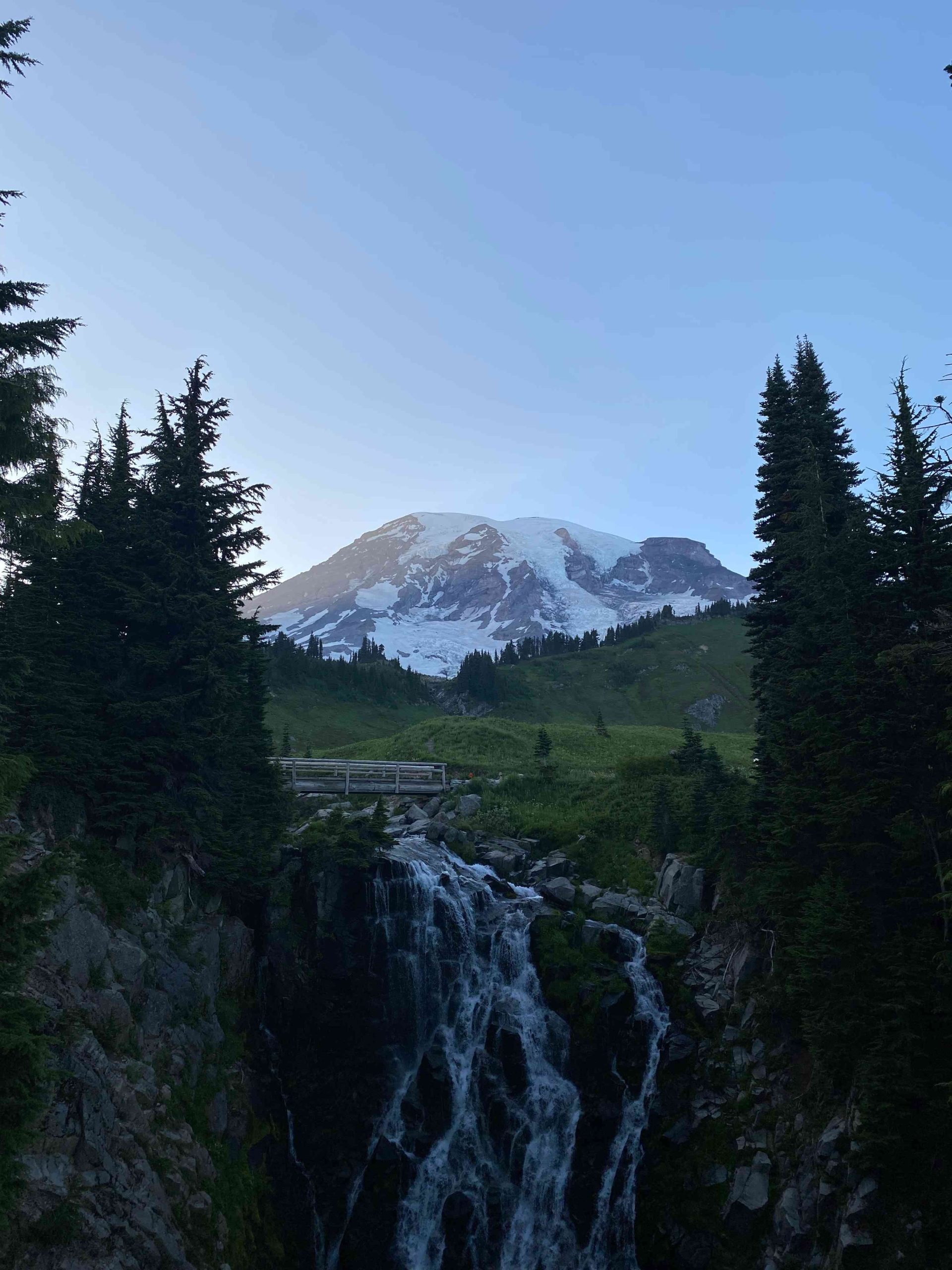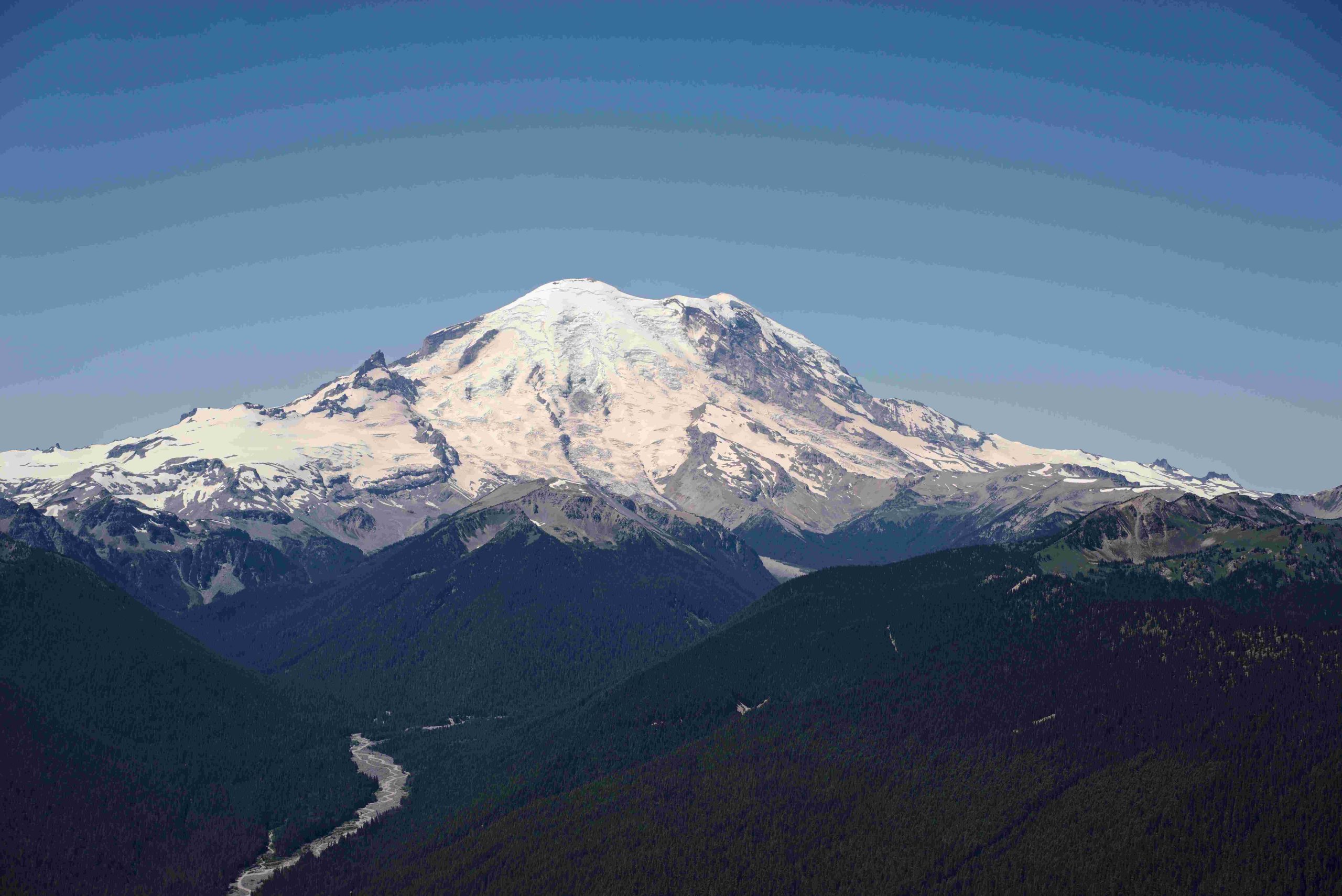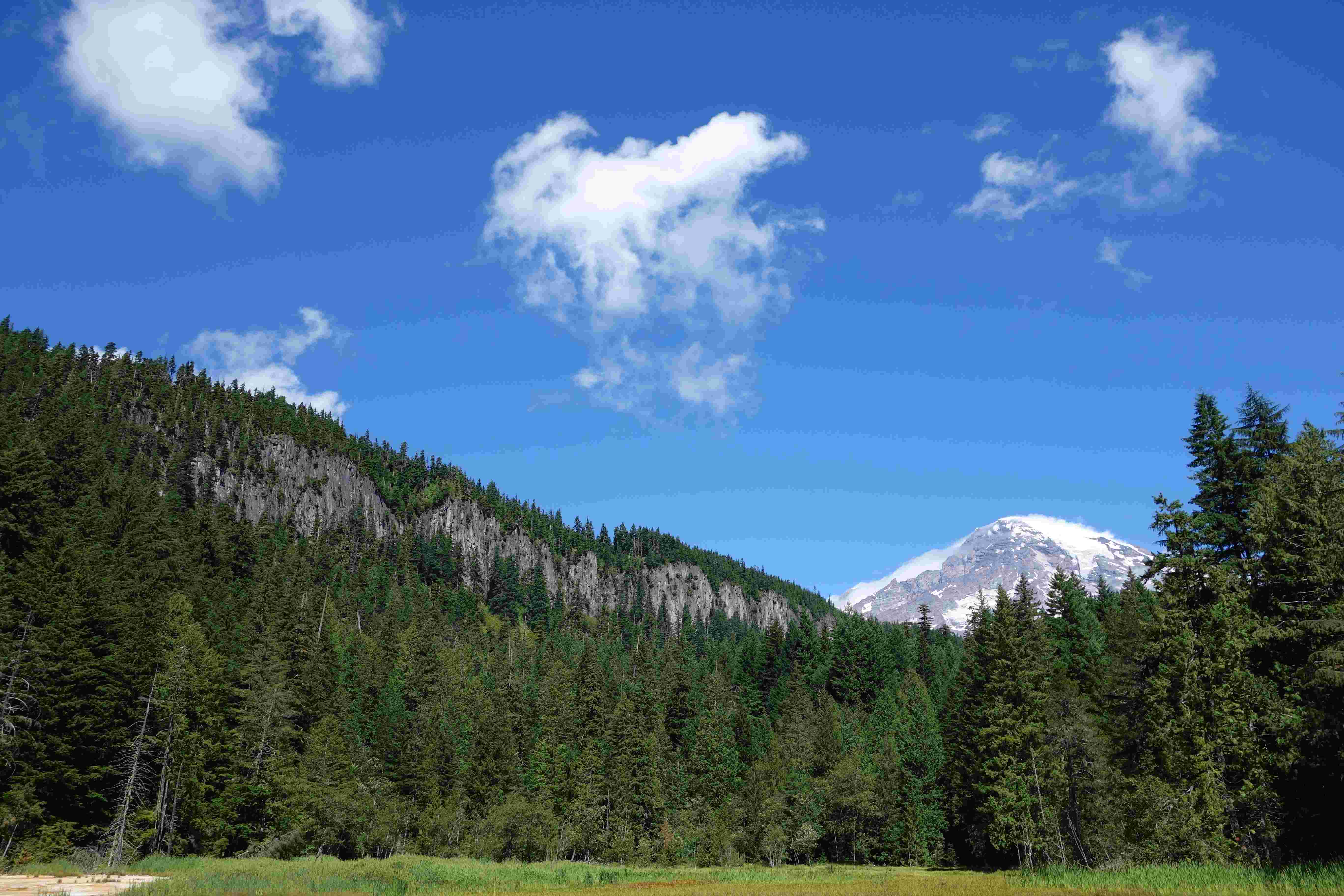The snow depth on Mount Rainier crater varies significantly throughout the year and across different elevations. Current measurements at lower elevations show depths ranging from 16.9 inches at Paradise to 49.25 inches at Sunrise Base. However, the crater area, being at a much higher elevation, likely has substantially deeper snow. Historical data indicates that snow depths at Paradise can reach up to 239 inches (19.9 feet) during peak seasons, suggesting even greater depths at the summit crater.
What Are the Current Snow Depth Measurements?

As of November 2024, the most recent snow depth measurements for Mount Rainier are:
- Paradise (elevation 5,120 feet): 16.9 inches
- Sunrise Base (elevation 6,410 feet): 49.25 inches
It’s important to note that these measurements are taken at lower elevations than the crater itself. The crater, being at a much higher altitude, typically experiences significantly deeper snow accumulation.
How Do Historical Averages Compare to Current Depths?

Historical data provides valuable context for understanding snow depths on Mount Rainier:
- At Paradise, the 30-year average snow water equivalent (SWE) for late November is about 0.4 inches.
- Maximum recorded snow depth at Paradise: 239 inches (approximately 19.9 feet)
This historical data suggests that snow depths can vary dramatically, with the potential for extremely deep snow during peak winter months.
What Factors Influence Snow Depth on Mount Rainier?
Several factors contribute to the snow depth on Mount Rainier’s crater:
- Elevation: The crater, being at a much higher elevation than measurement stations, typically accumulates more snow.
- Weather patterns: Pacific Northwest weather systems can bring significant snowfall to the mountain.
- Time of year: Snow depth generally increases throughout the winter and early spring.
- Wind patterns: High winds can redistribute snow, creating deeper drifts in some areas.
How Does Snow Depth Vary Across Different Parts of the Mountain?
Snow depth on Mount Rainier is not uniform and can vary significantly:
| Location | Elevation (feet) | Typical Snow Depth Range |
|---|---|---|
| Paradise | 5,120 | 0-239 inches |
| Sunrise Base | 6,410 | Varies, recent measurement 49.25 inches |
| Crater | 14,410 | Likely much deeper than lower elevations |
The crater area, being at the highest elevation, typically experiences the deepest snow accumulation on the mountain.
What Challenges Does Deep Snow Present for Accessing the Crater?
Deep snow on Mount Rainier’s crater presents several challenges:
- Avalanche risk: Increased snow depth elevates the danger of avalanches.
- Navigation difficulties: Deep snow can obscure landmarks and trails.
- Physical exertion: Moving through deep snow requires significant effort and specialized equipment.
- Weather hazards: High-elevation areas are prone to severe weather conditions.
How Do Researchers Measure Snow Depth at High Elevations?
Measuring snow depth at high elevations like Mount Rainier’s crater involves several methods:
- Remote sensing: Satellite imagery and LiDAR technology can estimate snow depths over large areas.
- Manual measurements: Researchers may conduct expeditions to take direct measurements using snow probes.
- Automated stations: While not present at the crater itself, lower-elevation automated stations provide data that can be extrapolated to estimate higher elevation conditions.
What Impact Does Snow Depth Have on the Crater’s Ecosystem?
The deep snow on Mount Rainier’s crater significantly influences the local ecosystem:
- Insulation: Deep snow acts as an insulator, protecting underlying soil and vegetation from extreme cold.
- Water supply: Snowmelt from the crater feeds rivers and streams throughout the year.
- Habitat: Some specialized organisms are adapted to live in or under the snowpack.
- Growing season: Deep snow can shorten the growing season for high-altitude plants.
How Does Climate Change Affect Snow Depth on Mount Rainier?
Climate change is having noticeable effects on snow depth patterns at Mount Rainier:
- Changing precipitation patterns: Shifts between snow and rain events can alter snow accumulation.
- Earlier melt: Warmer temperatures may lead to earlier snowmelt, reducing overall snow depth.
- Glacier retreat: Long-term changes in snow accumulation affect the mountain’s glaciers.
Researchers continue to monitor these changes to understand their long-term implications for the mountain’s ecosystem and water resources.
What Safety Precautions Are Necessary When Exploring Deep Snow Areas?
When venturing into areas of deep snow on Mount Rainier, several safety precautions are crucial:
- Avalanche awareness: Always check avalanche forecasts and carry proper safety equipment.
- Proper gear: Use snowshoes, skis, or other appropriate equipment for deep snow travel.
- Navigation tools: Carry maps, compass, and GPS devices, as deep snow can obscure familiar landmarks.
- Weather monitoring: Be prepared for rapid weather changes at high elevations.
- Travel in groups: Never explore deep snow areas alone.
How Does Snow Depth Affect Climbing Routes to the Crater?
Snow depth significantly impacts climbing routes to Mount Rainier’s crater:
- Route selection: Deep snow may make some routes impassable while opening up others.
- Technical difficulty: Increased snow depth can change the technical requirements of a climb.
- Time considerations: Moving through deep snow often requires more time and energy.
- Crevasse danger: Deep snow can hide crevasses, increasing the risk for climbers.
Climbers must carefully assess conditions and adjust their plans based on current snow depths and overall mountain conditions.
In conclusion, while exact measurements of snow depth at Mount Rainier’s crater are not readily available, historical data and measurements from lower elevations suggest that it can be extremely deep, potentially exceeding 20 feet during peak snow seasons. The dynamic nature of snow accumulation on the mountain, influenced by various factors including elevation, weather patterns, and climate change, makes it a constantly changing environment that requires careful monitoring and respect from all who venture into its challenging terrain.
References:
1. https://waterdata.morageology.com/station.php?g=OSOSUNB
2. https://www.nwrfc.noaa.gov/snow/snowplot.cgi?AFSW1
3. https://www.pnt.org/pnta/know-before-you-go/plan-your-trip/snow/
4. https://www.nps.gov/mora/planyourvisit/winter-recreation.htm

